The SQL COUNT() function returns the number of records returned by a query.
Example
-- returns the count of rows in the Orders table
SELECT COUNT(*)
FROM Orders;Here, the above SQL command returns the count of rows in the Orders table.
COUNT() Syntax
SELECT COUNT(*)
FROM table;
Here,
COUNT()is the function to count the number of rows in a tabletableis the name of the table
Example: SQL COUNT()
--returns the number of rows in the Customers table
SELECT COUNT(*)
FROM Customers;Here, the above SQL command counts and returns the number of rows in the Customers table.
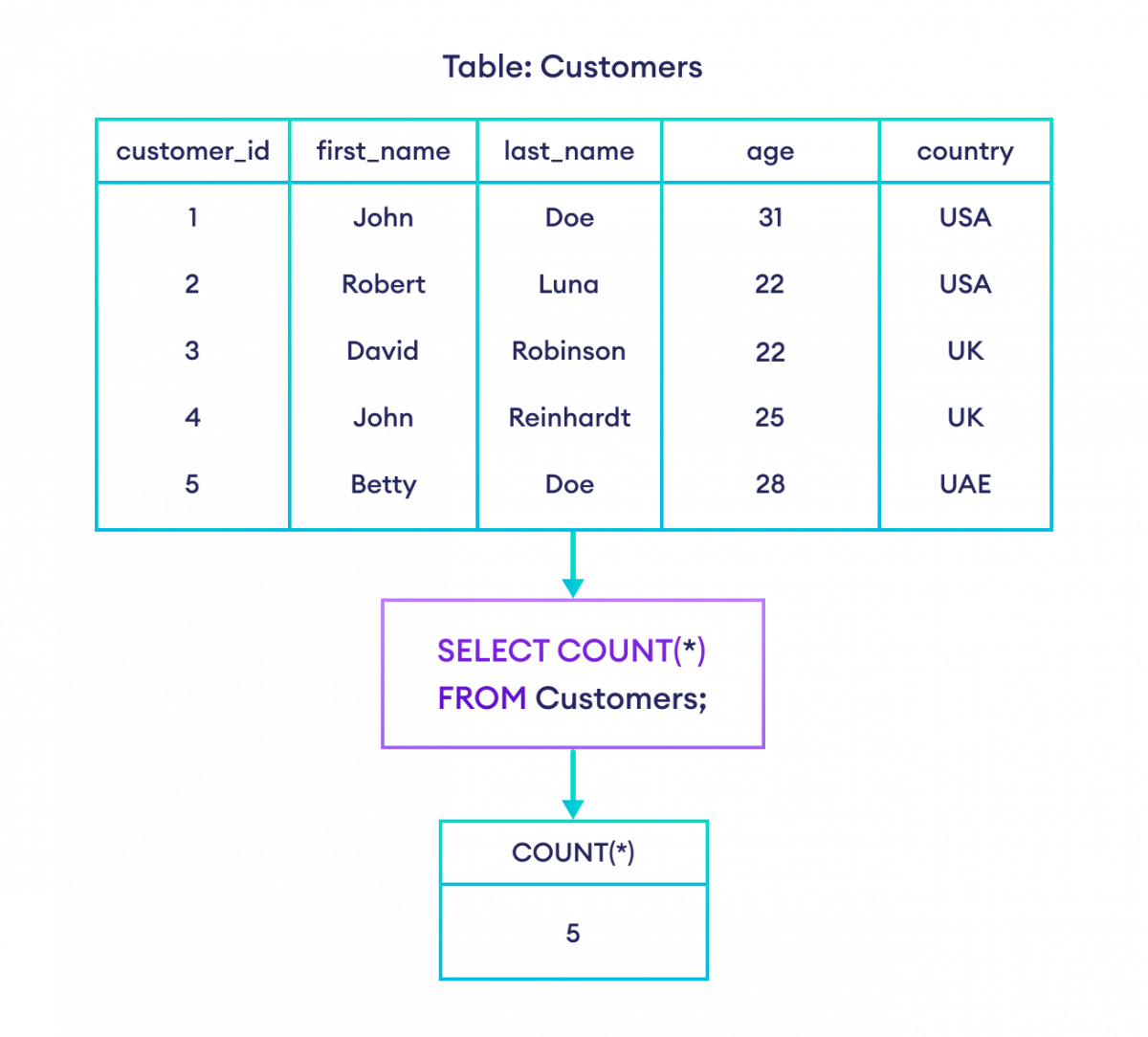
It is possible to give custom names to output fields using the AS keyword. For example,
--return the count of rows from the customers table as total_customers
SELECT COUNT(*) AS total_customers
FROM Customers;
Here, the field name COUNT(*) is replaced by total_customers in the result set.
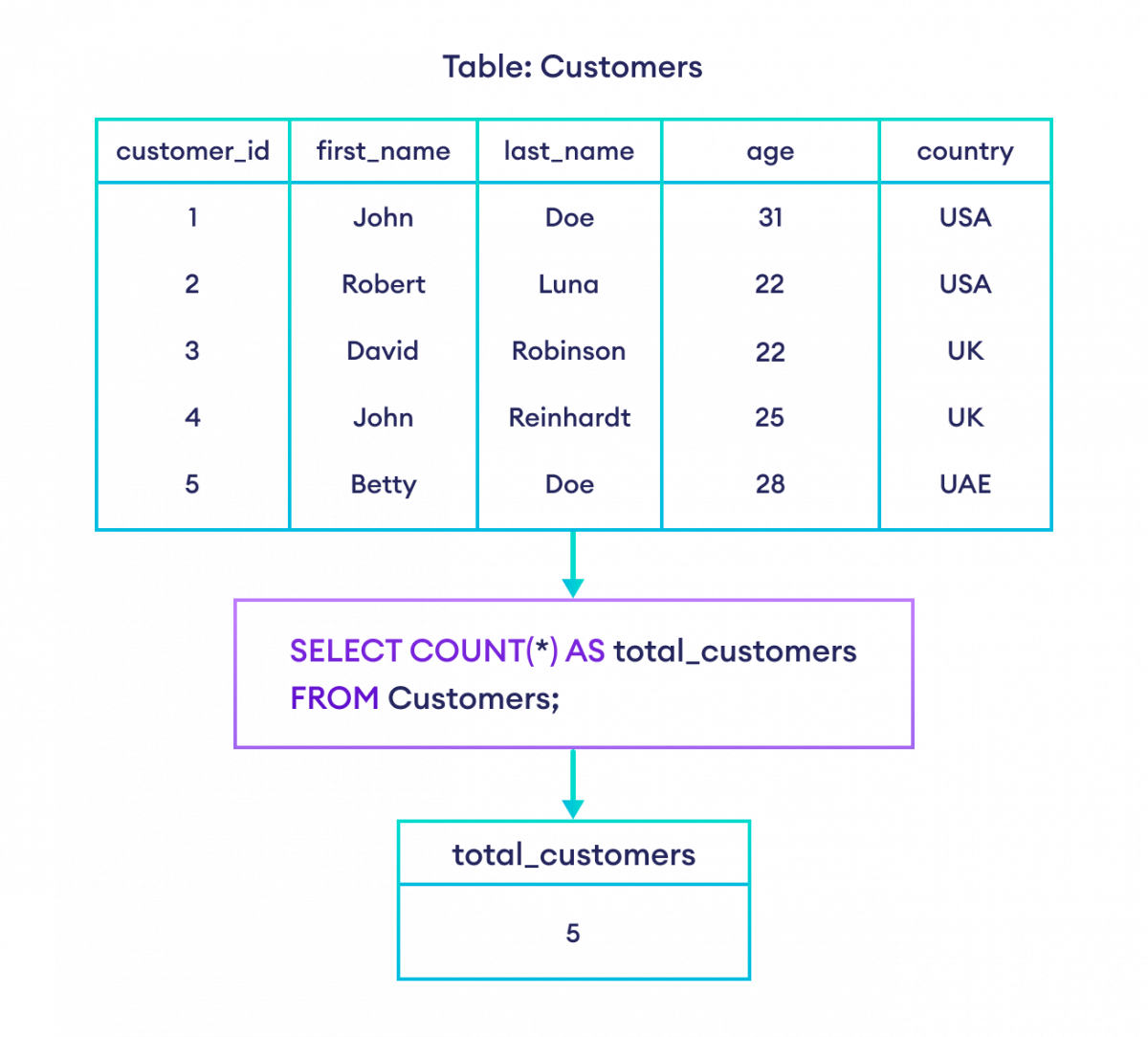
Example: Specify Column to Count
We can also specify a column name in COUNT() to only count the rows in that particular column.
Let's look at an example.
--returns the count of non-null values in the age column
SELECT COUNT(age)
FROM Customers;Here, the above SQL query returns the count of non-null values in the age column.
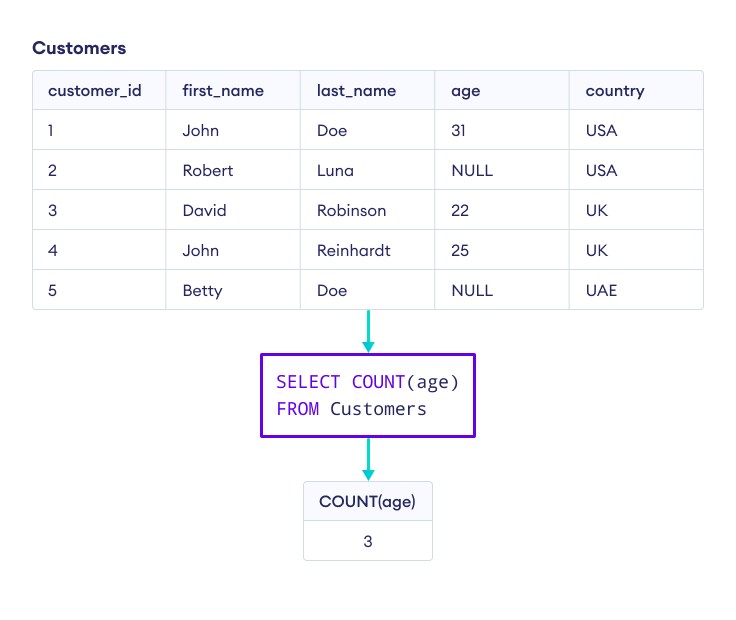
Here, when we specify a column name instead of *, NULL values are not included in the count.
COUNT() With WHERE
We can use COUNT() with WHERE to count rows that match the given value.
-- count of customers who live in the UK
SELECT COUNT(country)
FROM Customers
WHERE country = 'UK';Here, the SQL command returns the count of customers whose country is the UK.
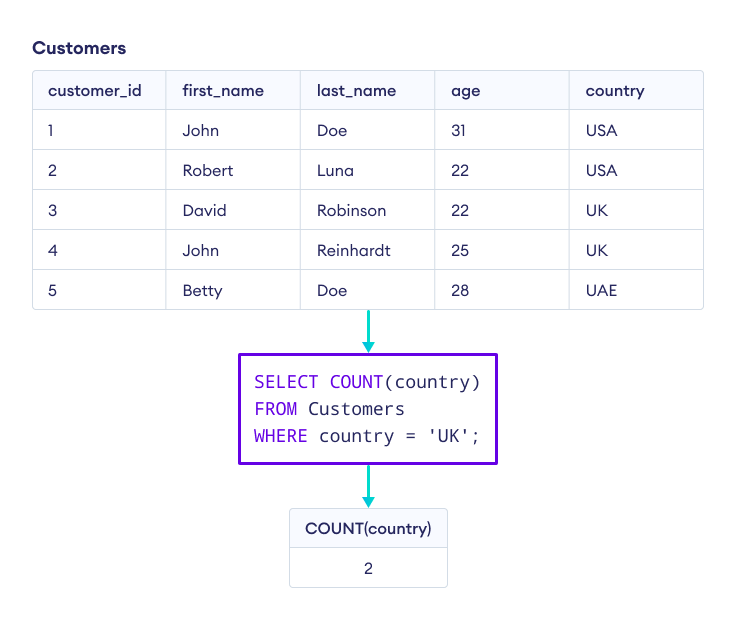
COUNT() With DISTINCT
If we need to count the number of unique rows, we can use the COUNT() function with the DISTINCT clause. For example,
-- count the unique countries in Customers table
SELECT COUNT(DISTINCT country)
FROM Customers;Here, the SQL command returns the count of unique countries.
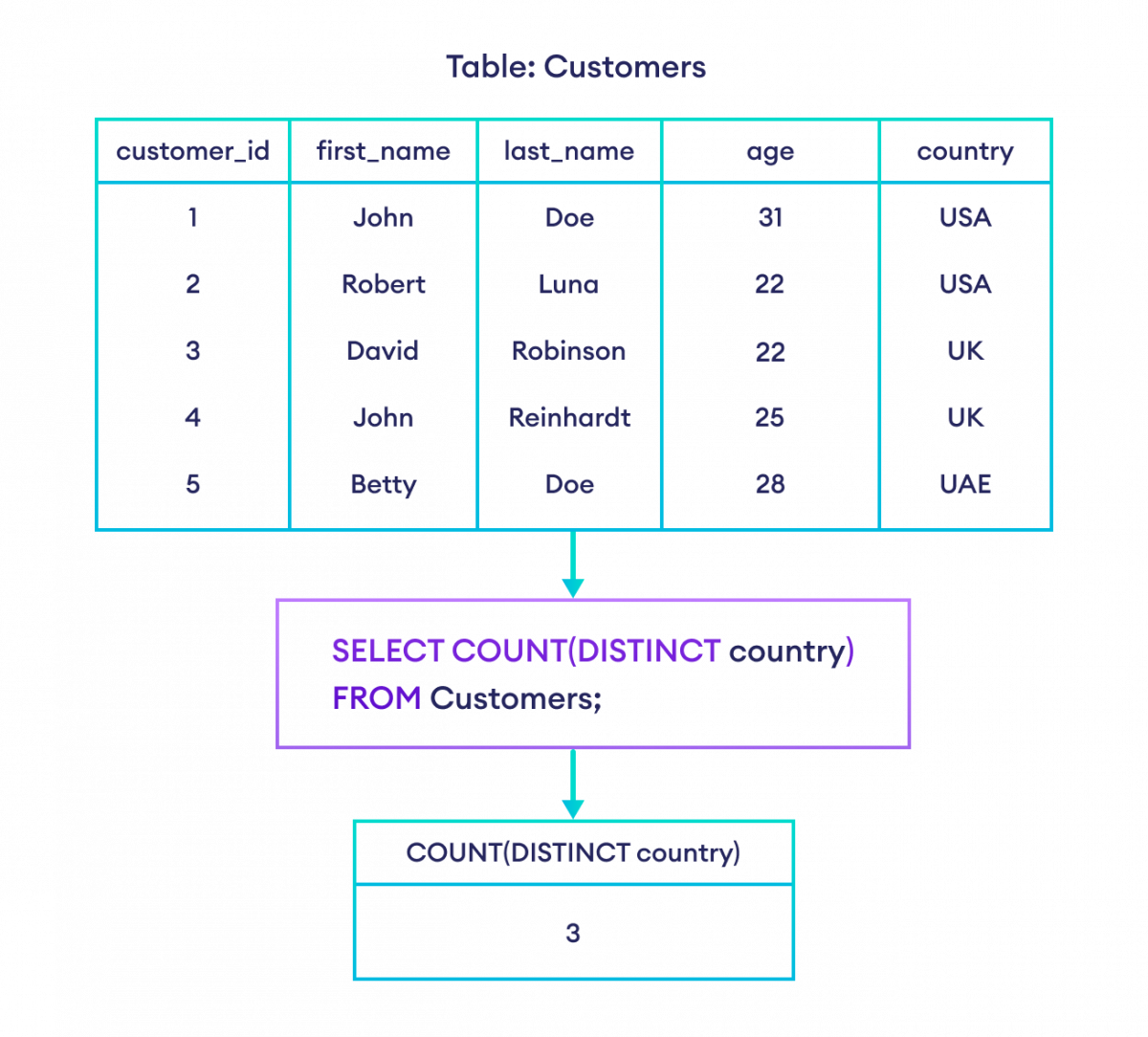
More on SQL COUNT()
The COUNT() function can be used with the GROUP BY clause to count the rows with similar values. For example,
-- count the number of customers in each country
SELECT country, COUNT(*) AS customers
FROM Customers
GROUP BY country;
Here, the SQL command returns the number of customers in each country.
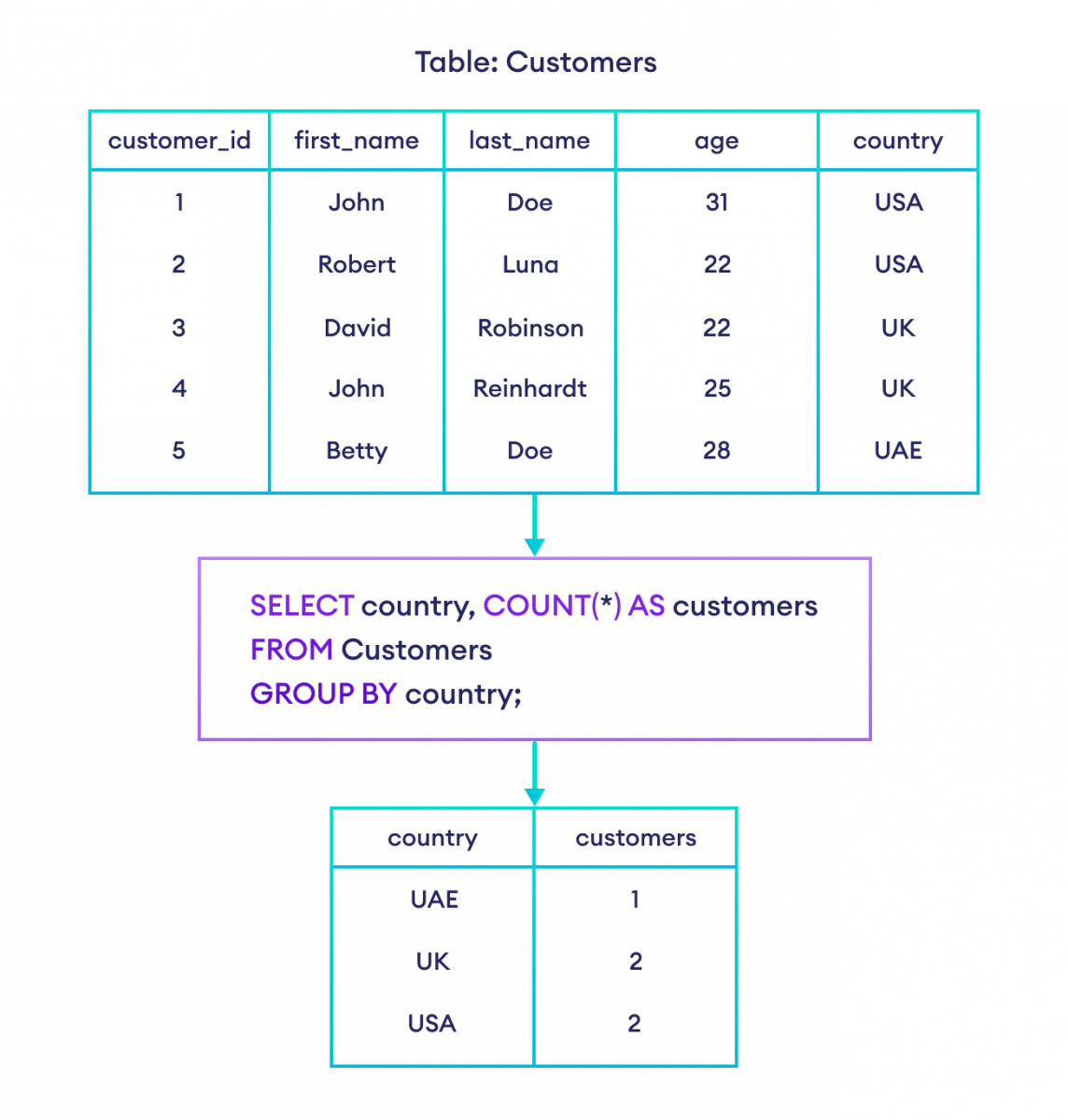
We can use COUNT() with the HAVING clause as follows:
--count the number of rows by country and return the results for count greater than one
SELECT COUNT(customer_id), country
FROM Customers
GROUP BY country
HAVING COUNT(customer_id) > 1;
Here, the SQL command:
- counts the number of rows by grouping them by country
- returns the result set if their count is greater than 1
Also Read